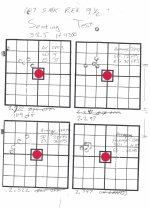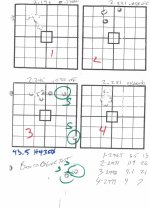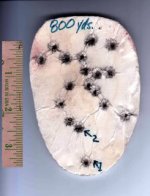what term do you suggest should be used when we all speak about seating the bullet some distance from the lands/leade/rifling?
I thought a bit, perhaps "engagement point"?? What we're talking about here is the point on the ogive where it touches the rifling (engages the rifling) when it is far enough forward.
The term would be consistent, always referring to the point on the bullet where the diameter of the bullet touches the rifling, but understanding that the location of that point on the bullet will be in a slightly different place with each different bullet style and each different barrel.
I'll be honest and admit I don't use a comparator, nothing I do with my guns and ammo requires that degree of precision. From what I've read on the forum, comparators seem to cause more confusion than precision, though its quite likely that the guys who do get a benefit from using them simply don't write about it...
Here's something else that occurred to me, similar to the "engagement point" of the rifling on the bullet, its the "engagement point" of the bullet seating stem on the bullet.
Same in principle as the bullet touching the rifling but happening on the nose of the bullet, close to the tip. If you are getting variations measuring to the engagement point of the rifling on your loaded ammo, might not the variations be the result of variation of the seating stem "engaging" the bullet during seating??
Using the same seating stem adjustment, one will get different over all lengths with different ogive profile bullets, easily seen if loading something
like .30 cal 150gr spitzer, spire point and round nose bullets.
thoughts?



